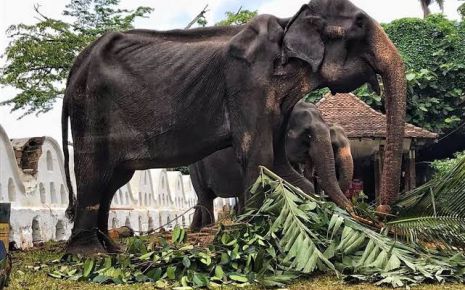Examining Viscera to Find Out Cause of Death: Challenges for Criminal Justice System
A viscera report is compiled in order to establish the reason for death in
cases where traditional autopsies are inconclusive. These examinations involve a
thorough investigation of the viscera i.e., internal organs, particularly those
located in the chest, abdomen, or pelvis.
In instances where autopsies fail to provide a definitive answer, viscera are conserved and examined in order to determine the reason for death, typically in situations involving suspected instances of poisoning, cold blooded murder or dowry-related deaths. They may also be performed in cases lacking crucial clues, as well as criminal cases where there is no evidence or the perpetrator has successfully concealed it, such as murders or poisoning.
The viscera can be found in the central cavities of the chest, abdomen, and pelvis. These include the main pulmonary, gastrointestinal, genitourinary, and cardiovascular organs. The term 'viscera' comes from the Latin word 'viscus,' meaning an organ of the body.
The viscera sample collected from the autopsy surgeon should be sent by the investigating police officer to the forensic science laboratory for chemical analysis within 15 days of the postmortem.
Upon death, the human body, being a complex system, undergoes a series of changes that can offer valuable insights into the cause and manner of death. Viscera, which comprises internal organs such as the heart, lungs, liver, and brain, plays a critical role in forensic investigations due to these changes. Through the examination of their condition, appearance, and any abnormalities, forensic pathologists can often determine the cause of death with a high level of certainty.
The most common cause of death that can be identified through the examination of viscera is trauma, which can result from various events such as blunt force injuries, penetrating wounds, and thermal injuries. Upon inspection of the organs, signs of trauma may manifest in the form of lacerations, contusions, or fractures. For instance, a ruptured liver or spleen may indicate blunt force trauma to the abdomen, while a punctured lung may suggest a penetrating injury, such as a stab or gunshot wound.
In addition to trauma, disease is another crucial cause of death that can be determined through the examination of viscera. Various diseases and medical conditions can affect the function and structure of viscera, ultimately leading to death. For example, cardiovascular diseases such as myocardial infarction (heart attack) can cause considerable damage to the heart muscle, which can be observed during an autopsy. Similarly, conditions like pneumonia or pulmonary embolism can affect the lungs, resulting in respiratory failure and death.
Aside from physical trauma and illnesses, toxicological testing on viscera can uncover the presence of drugs, alcohol, poisons or other substances that may have played a role in an individual's death. This type of examination involves analysing samples of blood, urine, and tissues to detect the presence and levels of toxic substances.
For instance, the discovery of alcohol in the blood or liver can suggest alcohol intoxication as a contributing factor in the person's demise. Similarly, the identification of drugs such as opioids, benzodiazepines, or stimulants can provide crucial insights into the circumstances of a death.
Moreover, an evaluation of the brain and central nervous system is crucial in determining the cause of death in cases involving head injuries, neurological disorders, or drug overdose. A macroscopic analysis of the brain can reveal signs of injury such as haemorrhaged or contusions, while a microscopic examination can pinpoint specific pathological changes associated with conditions like stroke, epilepsy, or neurodegenerative diseases.
It is worth noting that the interpretation of findings from the examination of viscera requires careful consideration of the individual's medical history, the circumstances surrounding their death, and other pertinent factors. In some instances, multiple factors may contribute to a person's passing, necessitating a careful evaluation of each finding and the overall context.
In summary, the examination of viscera is a crucial aspect of forensic pathology and can provide valuable information about the cause and manner of death. By analysing the condition, appearance, and any abnormalities present in viscera, forensic pathologists can identify traumatic injuries, underlying diseases, toxicological factors, and other contributing factors that may have led to an individual's death. This information is vital in determining the circumstances surrounding a death, aiding in criminal investigations, and bringing closure to families and loved ones.
The perplexing issue of determining the cause of death in cases involving poisoning, where the viscera report yields negative results, creates a dilemma for the forensic pathologist, the legal system, and the general public.
This dilemma is a common occurrence in India, due to various reasons such as delay by investigating police officers in collecting the viscera from the hospital where the autopsy was done and then sending the same to the forensic science laboratory, delays in examining the viscera due to poor infrastructure and shortage of manpower of the forensic science laboratories and sometimes due to negligence, lack of training of the investigating police officers in handling the viscera pre and post-examination, improper preservation methods, use of incorrect analytical techniques, early decomposition of poisons, complete metabolism of poisons in the body, minimal amounts of poison present in the viscera, and lack of suitable chemical tests for certain poisons.
Further, there is lack of adequate facilities at the police stations for preserving the viscera safely, absence of proper tracking system of the viscera at the police stations and negligence by investigating police officers in collecting the viscera report from the forensic laboratories and tagging the same with case diaries.
You may find packets of viscera hanging from the trees at some police stations due to absence of proper construction and management of malkhana. Further, hundreds of viscera reports are pending with the forensic science laboratories as they are unable to conduct examination due to poor infrastructure and understaffed position of the forensic science laboratories.
Furthermore, the scope of residual analysis for poisons is limited to only 10-15 commonly available ones, leaving out other potent killers like insulin, KCI, and Adrenaline, which cannot be detected in the viscera.
In a ruling on January 21, 2014, the Supreme Court of India mandated that investigating agencies must conduct a viscera test in cases of suspicious deaths, such as those involving possible poisoning or cold-blooded killings. According to a study by the All-India Institute of Medical Sciences (AIIMS), this examination should be completed within six months in order to expedite the investigation process.
Punjab's only chemical examiner laboratory at Kharar has brought attention to the issue of incorrect viscera analysis. The laboratory has discovered that in certain instances, samples are not being sent in accordance with guidelines and without the necessary accompanying documents, leading to objections being raised, due to carelessness on the part of investigating police officers and autopsy surgeons.
According to several unnamed police and judicial officials, there may have been instances where justice was not served due to the failure to send viscera for chemical testing in time and improper and careless handling of the viscera by the investigating police officers and autopsy surgeons.
In many post-mortem reports it is written by the autopsy surgeon that the final opinion regarding the cause of death will be submitted after receipt of viscera report, but by the time the viscera report is received the autopsy surgeon or the investigating police officer gets transferred and a lack of co-ordination in the compilation and processing of post mortem and viscera report is noticed in such cases.
Due to the failure of the police to submit the viscera for examination, there could be numerous pending medico-legal cases in the district courts, potentially allowing murderers to escape punishment.
The police have the authority to gather the viscera and autopsy reports, send the viscera to the forensic science laboratories, collect the viscera report from the forensic science laboratories and send the viscera report to the courts in proper form, but they neglect to do so.
There is no viscera tracking management system working at most of the police stations; hence some viscera reports remain lying at the police stations sometimes due to negligence of the investigating police officers and sometimes due to apathy of the officer-in-charge of the police stations particularly after transfer of the investigating police officer toa different police unit. The destruction of viscera after examination is completed cannot be done without the court's approval, and it is the responsibility of the judiciary to intervene.
The Orissa High Court in December 2023 has restated that it is the responsibility of investigating agencies to ensure that a 'viscera sample' is sent for chemical testing in any suspected murder cases involving 'poisoning', and to present the resulting report to the trial court after receiving it from the Forensic Laboratory.
The supreme court has upheld the verdict of conviction against the accused in a dowry death case despite no chemical poisoning found in the viscera report in the case of Buddhadeb Saha v. State of West Bengal.
The supreme court in the case of Mahabir Mandal v. State of Bihar (1972), held that the absence of poison as detected in the viscera report cannot be considered a confirmatory test for poisoning.
Written By: Md.Imran Wahab, IPS, IGP, Provisioning, West Bengal
Email: [email protected], Ph no: 9836576565
In instances where autopsies fail to provide a definitive answer, viscera are conserved and examined in order to determine the reason for death, typically in situations involving suspected instances of poisoning, cold blooded murder or dowry-related deaths. They may also be performed in cases lacking crucial clues, as well as criminal cases where there is no evidence or the perpetrator has successfully concealed it, such as murders or poisoning.
The viscera can be found in the central cavities of the chest, abdomen, and pelvis. These include the main pulmonary, gastrointestinal, genitourinary, and cardiovascular organs. The term 'viscera' comes from the Latin word 'viscus,' meaning an organ of the body.
The viscera sample collected from the autopsy surgeon should be sent by the investigating police officer to the forensic science laboratory for chemical analysis within 15 days of the postmortem.
Upon death, the human body, being a complex system, undergoes a series of changes that can offer valuable insights into the cause and manner of death. Viscera, which comprises internal organs such as the heart, lungs, liver, and brain, plays a critical role in forensic investigations due to these changes. Through the examination of their condition, appearance, and any abnormalities, forensic pathologists can often determine the cause of death with a high level of certainty.
The most common cause of death that can be identified through the examination of viscera is trauma, which can result from various events such as blunt force injuries, penetrating wounds, and thermal injuries. Upon inspection of the organs, signs of trauma may manifest in the form of lacerations, contusions, or fractures. For instance, a ruptured liver or spleen may indicate blunt force trauma to the abdomen, while a punctured lung may suggest a penetrating injury, such as a stab or gunshot wound.
In addition to trauma, disease is another crucial cause of death that can be determined through the examination of viscera. Various diseases and medical conditions can affect the function and structure of viscera, ultimately leading to death. For example, cardiovascular diseases such as myocardial infarction (heart attack) can cause considerable damage to the heart muscle, which can be observed during an autopsy. Similarly, conditions like pneumonia or pulmonary embolism can affect the lungs, resulting in respiratory failure and death.
Aside from physical trauma and illnesses, toxicological testing on viscera can uncover the presence of drugs, alcohol, poisons or other substances that may have played a role in an individual's death. This type of examination involves analysing samples of blood, urine, and tissues to detect the presence and levels of toxic substances.
For instance, the discovery of alcohol in the blood or liver can suggest alcohol intoxication as a contributing factor in the person's demise. Similarly, the identification of drugs such as opioids, benzodiazepines, or stimulants can provide crucial insights into the circumstances of a death.
Moreover, an evaluation of the brain and central nervous system is crucial in determining the cause of death in cases involving head injuries, neurological disorders, or drug overdose. A macroscopic analysis of the brain can reveal signs of injury such as haemorrhaged or contusions, while a microscopic examination can pinpoint specific pathological changes associated with conditions like stroke, epilepsy, or neurodegenerative diseases.
It is worth noting that the interpretation of findings from the examination of viscera requires careful consideration of the individual's medical history, the circumstances surrounding their death, and other pertinent factors. In some instances, multiple factors may contribute to a person's passing, necessitating a careful evaluation of each finding and the overall context.
In summary, the examination of viscera is a crucial aspect of forensic pathology and can provide valuable information about the cause and manner of death. By analysing the condition, appearance, and any abnormalities present in viscera, forensic pathologists can identify traumatic injuries, underlying diseases, toxicological factors, and other contributing factors that may have led to an individual's death. This information is vital in determining the circumstances surrounding a death, aiding in criminal investigations, and bringing closure to families and loved ones.
The perplexing issue of determining the cause of death in cases involving poisoning, where the viscera report yields negative results, creates a dilemma for the forensic pathologist, the legal system, and the general public.
This dilemma is a common occurrence in India, due to various reasons such as delay by investigating police officers in collecting the viscera from the hospital where the autopsy was done and then sending the same to the forensic science laboratory, delays in examining the viscera due to poor infrastructure and shortage of manpower of the forensic science laboratories and sometimes due to negligence, lack of training of the investigating police officers in handling the viscera pre and post-examination, improper preservation methods, use of incorrect analytical techniques, early decomposition of poisons, complete metabolism of poisons in the body, minimal amounts of poison present in the viscera, and lack of suitable chemical tests for certain poisons.
Further, there is lack of adequate facilities at the police stations for preserving the viscera safely, absence of proper tracking system of the viscera at the police stations and negligence by investigating police officers in collecting the viscera report from the forensic laboratories and tagging the same with case diaries.
You may find packets of viscera hanging from the trees at some police stations due to absence of proper construction and management of malkhana. Further, hundreds of viscera reports are pending with the forensic science laboratories as they are unable to conduct examination due to poor infrastructure and understaffed position of the forensic science laboratories.
Furthermore, the scope of residual analysis for poisons is limited to only 10-15 commonly available ones, leaving out other potent killers like insulin, KCI, and Adrenaline, which cannot be detected in the viscera.
In a ruling on January 21, 2014, the Supreme Court of India mandated that investigating agencies must conduct a viscera test in cases of suspicious deaths, such as those involving possible poisoning or cold-blooded killings. According to a study by the All-India Institute of Medical Sciences (AIIMS), this examination should be completed within six months in order to expedite the investigation process.
Punjab's only chemical examiner laboratory at Kharar has brought attention to the issue of incorrect viscera analysis. The laboratory has discovered that in certain instances, samples are not being sent in accordance with guidelines and without the necessary accompanying documents, leading to objections being raised, due to carelessness on the part of investigating police officers and autopsy surgeons.
According to several unnamed police and judicial officials, there may have been instances where justice was not served due to the failure to send viscera for chemical testing in time and improper and careless handling of the viscera by the investigating police officers and autopsy surgeons.
In many post-mortem reports it is written by the autopsy surgeon that the final opinion regarding the cause of death will be submitted after receipt of viscera report, but by the time the viscera report is received the autopsy surgeon or the investigating police officer gets transferred and a lack of co-ordination in the compilation and processing of post mortem and viscera report is noticed in such cases.
Due to the failure of the police to submit the viscera for examination, there could be numerous pending medico-legal cases in the district courts, potentially allowing murderers to escape punishment.
The police have the authority to gather the viscera and autopsy reports, send the viscera to the forensic science laboratories, collect the viscera report from the forensic science laboratories and send the viscera report to the courts in proper form, but they neglect to do so.
There is no viscera tracking management system working at most of the police stations; hence some viscera reports remain lying at the police stations sometimes due to negligence of the investigating police officers and sometimes due to apathy of the officer-in-charge of the police stations particularly after transfer of the investigating police officer toa different police unit. The destruction of viscera after examination is completed cannot be done without the court's approval, and it is the responsibility of the judiciary to intervene.
The Orissa High Court in December 2023 has restated that it is the responsibility of investigating agencies to ensure that a 'viscera sample' is sent for chemical testing in any suspected murder cases involving 'poisoning', and to present the resulting report to the trial court after receiving it from the Forensic Laboratory.
The supreme court has upheld the verdict of conviction against the accused in a dowry death case despite no chemical poisoning found in the viscera report in the case of Buddhadeb Saha v. State of West Bengal.
The supreme court in the case of Mahabir Mandal v. State of Bihar (1972), held that the absence of poison as detected in the viscera report cannot be considered a confirmatory test for poisoning.
Written By: Md.Imran Wahab, IPS, IGP, Provisioning, West Bengal
Email: [email protected], Ph no: 9836576565
Law Article in India
Legal Question & Answers
Lawyers in India - Search By City
LawArticles
How To File For Mutual Divorce In Delhi

How To File For Mutual Divorce In Delhi Mutual Consent Divorce is the Simplest Way to Obtain a D...
Increased Age For Girls Marriage

It is hoped that the Prohibition of Child Marriage (Amendment) Bill, 2021, which intends to inc...
Facade of Social Media

One may very easily get absorbed in the lives of others as one scrolls through a Facebook news ...
Section 482 CrPc - Quashing Of FIR: Guid...

The Inherent power under Section 482 in The Code Of Criminal Procedure, 1973 (37th Chapter of t...
The Uniform Civil Code (UCC) in India: A...

The Uniform Civil Code (UCC) is a concept that proposes the unification of personal laws across...
Role Of Artificial Intelligence In Legal...

Artificial intelligence (AI) is revolutionizing various sectors of the economy, and the legal i...








Please Drop Your Comments